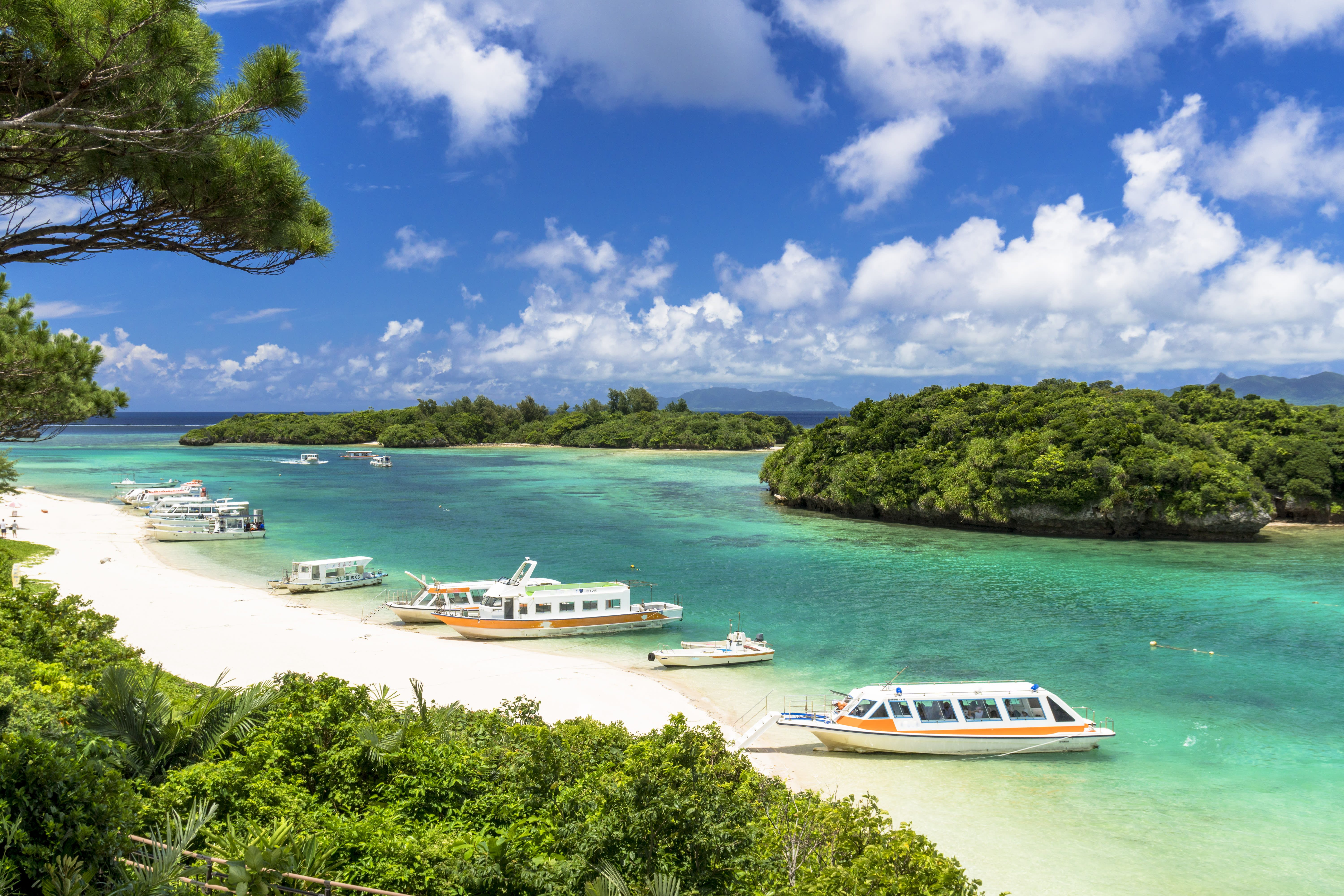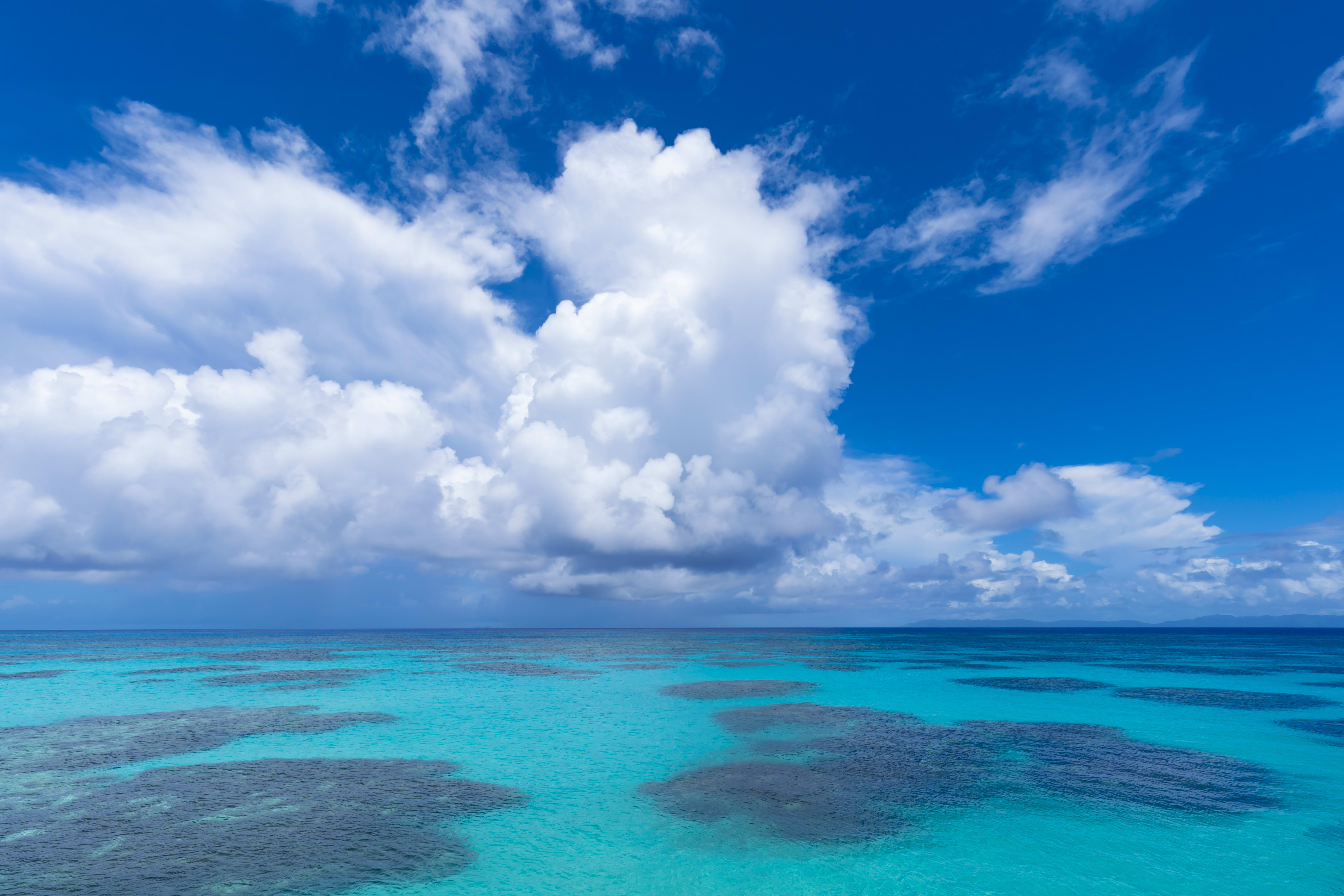Iriomotejima
Iriomotejima, the largest island in this national park, is home to rare wildlife such as the endemic Iriomote cat. On its northern coast is Hoshizuna-no-hama, a beach with beautiful star-shaped sands that are actually Foraminifera, the pointy husks of tiny shelled organisms.
Pinaisara Falls, located in the island's north not far from the sea, boasts a drop of 55 meters—the largest of any waterfall in Okinawa Prefecture. The best view of the falls is from the Funaura Marine Road.
At the heart of Iriomotejima are the terraced falls known as Mariyudu. Take a sightseeing boat upstream along the Urauchi River through the deep jungle and mangroves to Gunkaniwa, then walk along a path until you reach the falls' observatory for unobstructed views.

Nakama River
On a river cruise along the Nakama River, which snakes through the south of the island, you'll see the riverbanks covered in the largest mangrove forest in Japan. You may even catch a glimpse of the majestic crested serpent eagle flying above. If you’re diving or snorkeling in the waters surrounding Iriomotejima, there is a chance of spotting manta rays and sea turtles.
Take a ride on a cart drawn by a water buffalo to get across to Yubu Island, which is essentially one large botanical garden filled with tropical flowers and other flora. During the short ride, the driver sings island songs and plays a stringed instrument called a sanshin.
Ishigakijima
Ishigakijima is in the eastern part of the park. The wetlands of Nagura Amparu lie on the west coast of this island, and the vast mangrove forest here is the ideal spot for birdwatching, since it acts as an important stopping point for migrating birds.
Kabira Bay on the north coast has powdery white sand beaches, sparkling turquoise seas and dense forests. Take a trip on a glass-bottom boat to see the stunning reefs and colorful fish up close. Kabira Park offers a viewing platform on the pavilion that gives you panoramic views of the bay, and also has a fascinating collection of shrines and statues.

Kabira Bay
The Yaeyama palm tree (Satakentia liukiuensis) is unique to these islands, growing only on Iriomotejima and Ishigakijima. In Yonehara, the Yaeyama palm tree area is a Designated National Natural Monument, and boardwalks have been built throughout so visitors can observe these rare specimens.
Okinawa Prefecture's highest peak, Mount Omoto, is a short distance away, and from the summit there are expansive views of the Omoto mountain range, as well as the stunning ocean and coral reefs that surround the island.
Shiraho, set on the southeastern coast of Ishigakijima, has a lovely beach and is home to over 70 different kinds of corals, including the oldest blue coral colony in the northern hemisphere, which has been designated a UNESCO World Heritage site. This is a perfect spot for diving and snorkeling, or simply viewing the exotic fish and incredible blue coral during a glass-bottom boat tour.
Cape Hirakubo on the northern tip of the island has a lighthouse and lookout point. From here you can see the translucent sea and the vast colonies of coral.
Taketomijima
The island of Taketomijima to the east features a beautifully preserved traditional Okinawan village, consisting almost entirely of one-story houses with stone walls and red tiled roofs. The best way to explore this island is by bicycle or on foot.
Other Islands
The relaxed island of Kohamajima, just off the coast of Ishigakijima, has traditional villages, sugarcane fields and mangroves. To the south is heart-shaped Kuroshima, with farms and over 3,000 cattle grazing on it. Nakamoto Beach is a popular spot for snorkeling, and you can view sea turtles up close at the Kuroshima Research Station.
Haterumajima is Japan's southernmost inhabited island, and also has rows of traditional houses, as well as sugarcane fields. Nishihama Beach on the northwest coast is a popular spot for snorkeling and diving, with its flawless white sands and palette of blue ocean. You may see a reef manta ray, one of the world’s largest rays, which can grow up to five meters from wingtip to wingtip.

Ocean views from Haterumajima Island
Culture
Nature is an important part of everyday life for those inhabiting the environs of Iriomote-Ishigaki National Park. You can see this in the traditional construction methods, such as the construction of stone walls on Ishigaki using Ryukyu limestone.
Nature is at the forefront during festival time as well. During Kuroshima's Harvest Festival, people pray for a rich bounty from the sea. There is also a procession, a boat race and a celebratory dance to honor the gods. Iriomotejima's Shichi Festival has been going on for over 500 years, and is held in two of the island’s villages to pray for a plentiful harvest of grain. The festival features stick fighting as well as the lion dance. The latter is performed to ask the local deities for a bountiful harvest.






















